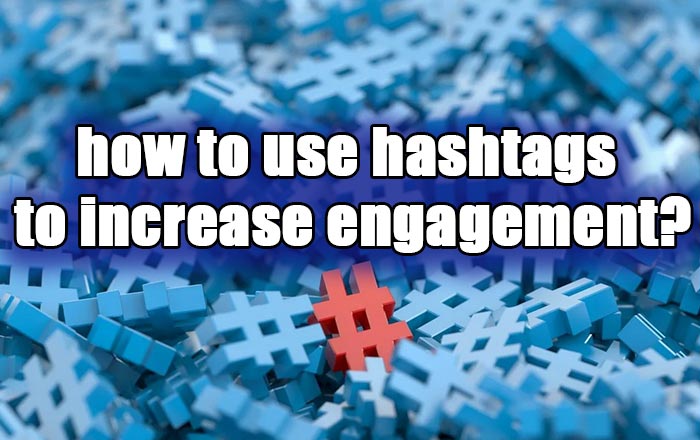Using Hashtags for Engagement takes center stage, inviting you to explore the world of social media through a hip and trendy lens. Get ready to dive into the power of hashtags for maximum impact!
Introduction to Hashtags
Hashtags are a powerful tool used on social media platforms to categorize content and make it easier to discover. By adding a “#” symbol before a word or phrase, users can create hashtags that link their posts to a larger conversation. The main purpose of hashtags is to increase the visibility of posts and engage with a wider audience by tapping into trending topics or specific themes.
Popular Hashtags on Different Platforms
- Instagram: #ThrowbackThursday, #OOTD, #InstaGood
- Twitter: #BlackLivesMatter, #COVID19, #Election2020
- Facebook: #TBT, #MotivationMonday, #Foodie
Types of Hashtags

When it comes to hashtags, there are several types that can be used to boost engagement and target specific audiences. Each type serves a unique purpose in helping your content reach a wider audience and generate more interaction.
Trending Hashtags
Trending hashtags are topics or phrases that are currently popular on social media platforms. By using trending hashtags, you can increase the visibility of your posts and join conversations that are already happening online. For example, during major events like the Super Bowl, hashtags related to the event trend on social media, allowing users to engage with content related to the event in real-time.
Branded Hashtags
Branded hashtags are unique to a specific brand or company and are used to promote brand awareness and loyalty. These hashtags often include the brand name or a tagline and can be used consistently across all marketing efforts. For instance, Coca-Cola’s #ShareACoke campaign encouraged customers to share photos of personalized Coke bottles, creating a sense of community among consumers.
Campaign-Specific Hashtags
Campaign-specific hashtags are created for a particular marketing campaign or initiative. These hashtags help to organize content related to the campaign and make it easier for users to find and engage with. For example, the #IceBucketChallenge campaign used a specific hashtag to raise awareness and funds for ALS research, leading to widespread participation and engagement on social media.
Niche Hashtags
Niche hashtags are specific to a particular industry, interest, or community. These hashtags target a smaller but more engaged audience that is interested in a particular topic. For example, #SustainableFashion is a niche hashtag that caters to individuals interested in eco-friendly and ethical fashion choices, allowing brands in this space to connect with a targeted audience.
Best Practices for Using Hashtags: Using Hashtags For Engagement
When it comes to using hashtags, there are certain best practices that can help increase engagement and visibility for your posts. Here are some tips to keep in mind:
Choosing the Right Hashtags
- Consider the content of your post and choose hashtags that are relevant to it. The more specific and targeted your hashtags are, the more likely you are to reach your intended audience.
- Research popular hashtags within your niche to see which ones are trending and resonating with users.
- Avoid using overly generic hashtags that are too broad, as your post may get lost in a sea of other content.
Optimal Number of Hashtags
- On Instagram, it’s recommended to use around 9-11 hashtags per post to maximize reach without appearing spammy.
- For Twitter, 1-2 hashtags per tweet is usually sufficient to increase visibility.
- On TikTok, using 3-5 relevant hashtags can help your video get discovered by a wider audience.
Researching Trending Hashtags and Creating Custom Hashtags
- Keep an eye on trending hashtags on each platform to see what topics are currently popular and incorporate them into your posts when relevant.
- Creating custom hashtags specific to your brand or campaign can help build a sense of community and encourage user engagement.
- Tools like Hashtagify, RiteTag, and Trendsmap can assist in finding trending hashtags and analyzing their performance.
Measuring Hashtag Performance
In the world of social media, measuring the performance of hashtags is crucial to understanding the impact of your content and refining your social media strategy. By tracking metrics like reach, impressions, engagement, and click-through rates, you can gain valuable insights into how your hashtags are resonating with your audience.
Tracking Tools and Methods
- Utilize built-in analytics tools on social media platforms like Instagram, Twitter, and Facebook to track hashtag performance.
- Third-party tools such as Hootsuite, Sprout Social, and Keyhole offer more in-depth analytics and tracking capabilities for hashtags.
Analyzing Metrics
- Reach: Measure how many unique users have seen your post with the hashtag.
- Impressions: Track the total number of times your post with the hashtag has been viewed.
- Engagement: Monitor likes, comments, shares, and saves on posts with the hashtag to gauge audience interaction.
- Click-Through Rates: Measure how many users clicked on links or calls to action associated with the hashtag.
Interpreting Hashtag Analytics
- Identify which hashtags are driving the most engagement and reach to inform future content strategies.
- Look for patterns in the performance of specific hashtags to understand what resonates with your audience.
- Adjust your hashtag usage based on analytics to optimize reach and engagement on social media.
Case Studies on Effective Hashtag Usage

In today’s digital age, hashtags have become a powerful tool for brands and influencers to increase engagement and reach a wider audience. Let’s take a look at some success stories of effective hashtag usage that have made a significant impact on brand awareness and audience interaction.
Starbucks #RedCupContest, Using Hashtags for Engagement
Starbucks launched the #RedCupContest during the holiday season, encouraging customers to share photos of their festive drinks in Starbucks’ iconic red cups. This campaign not only generated user-generated content but also created a sense of community among Starbucks fans. The hashtag went viral, with thousands of entries flooding social media platforms, resulting in increased brand visibility and engagement.
Nike #JustDoIt
Nike’s #JustDoIt campaign has become synonymous with the brand’s ethos of empowerment and motivation. By using this hashtag across their social media posts featuring athletes and inspiring stories, Nike has successfully connected with their audience on a deeper level. The hashtag has sparked conversations and encouraged followers to share their own stories of perseverance and determination, solidifying Nike’s position as a leader in the athletic industry.
Adidas #HereToCreate
Adidas leveraged the #HereToCreate hashtag to showcase their commitment to creativity and innovation in sports. By partnering with top athletes and influencers to create engaging content around this hashtag, Adidas has effectively positioned themselves as a brand that celebrates individuality and originality. The hashtag has resonated with their audience, driving brand loyalty and fostering a sense of belonging within the Adidas community.